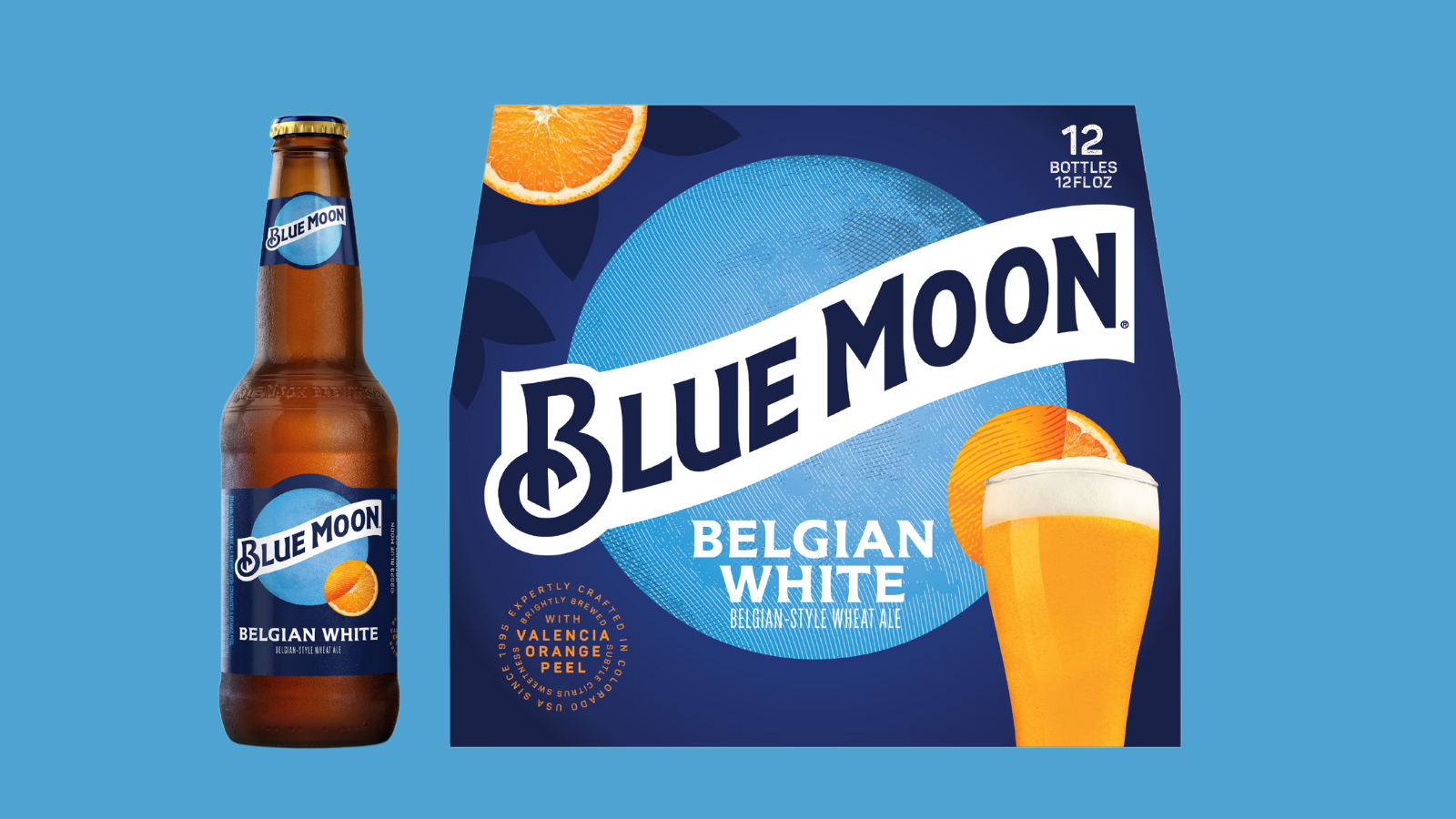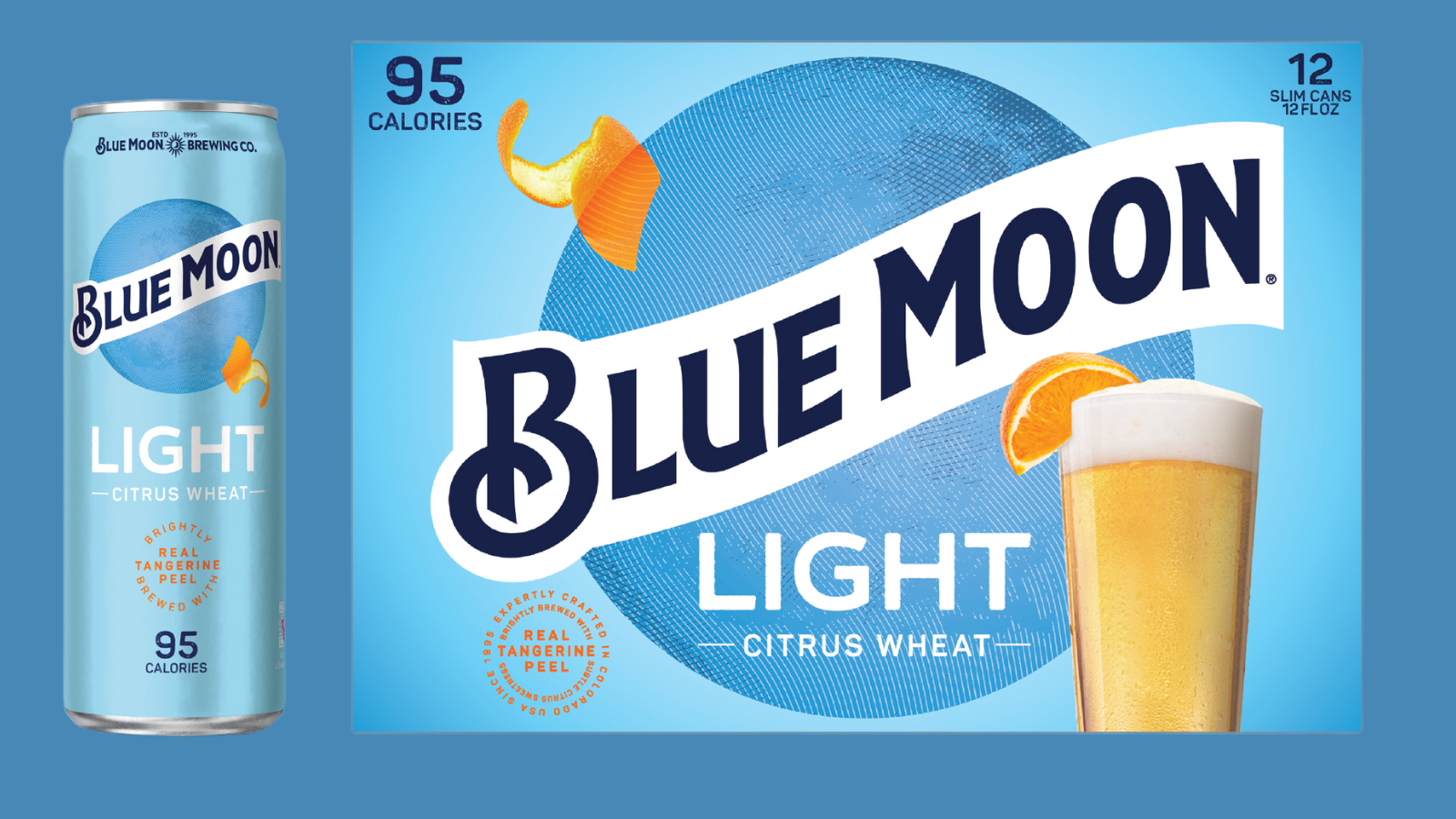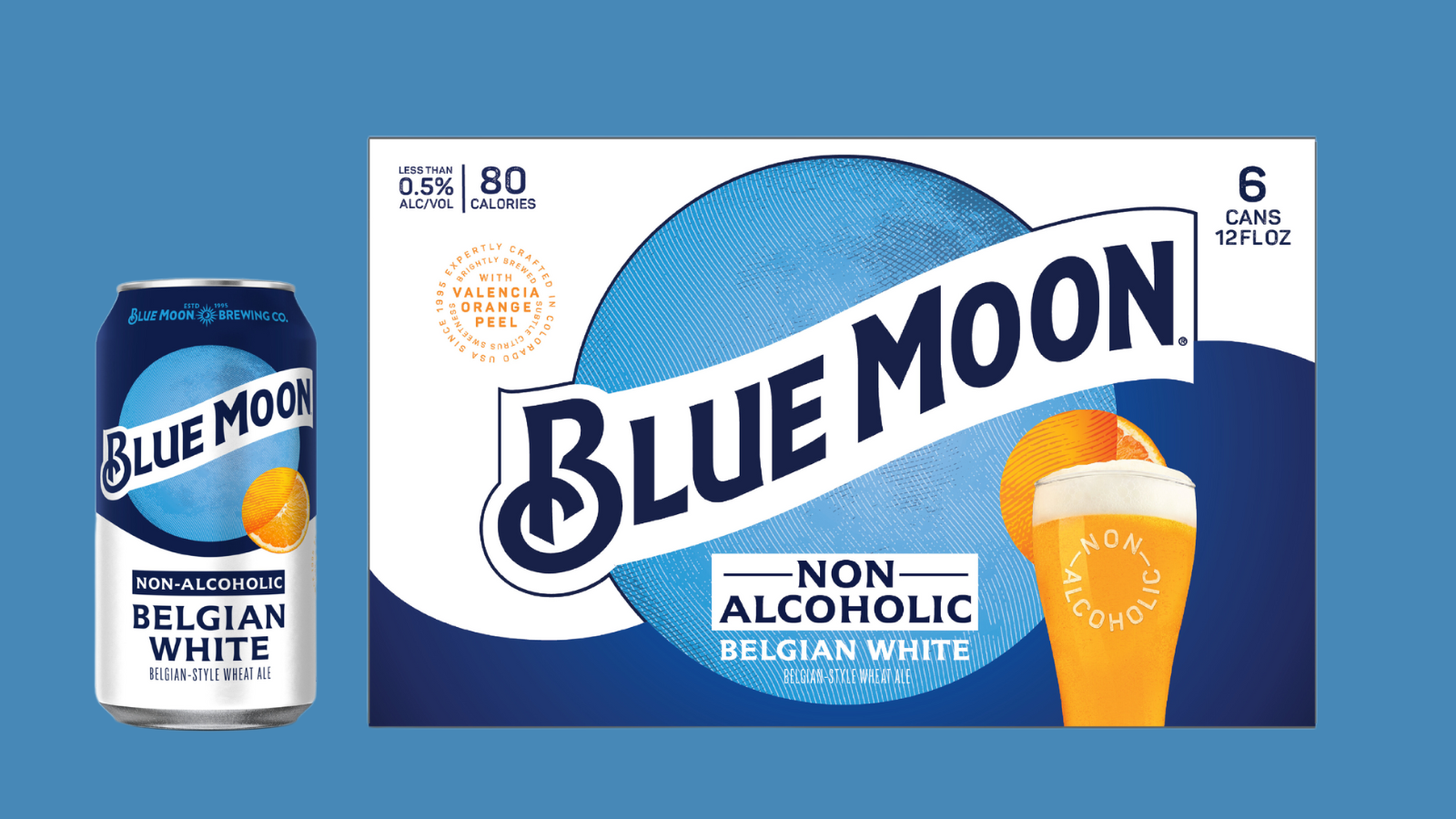Blue Moon is looking to get “brighter” in 2024 with revamped packaging, an expanded marketing campaign and a new look and name for Blue Moon Light, formerly Blue Moon LightSky.
Molson Coors Beverage Company’s big plans aim to provide a kickstart to the top craft beer, the top light craft beer and the No. 2 draft handle in the U.S.
Chief among them is modernizing Blue Moon Brewing Company’s entire family of brands, including its flagship, Belgian White Belgian-style Wheat Ale. The brand is debuting a streamlined new look on its packaging next year, its first brand update since 2019.
The new look aims to bring a cohesive identity to Blue Moon’s family of brands, Courtney Benedict, vice president for above-premium beer, said last week at Molson Coors’ distributor convention in Orlando.
“We know that closing the deal at shelf is the critical touchpoint” to connect with legal-age drinkers, she said. “We need to show – not just tell – drinkers that Blue Moon is the bright, vibrant, modern brand we all know it to be.”
The new look comes at a time when craft beer is weathering challenging trends, yet consumers have shown a penchant for above-premium options. And Blue Moon, says Rose Sokolnik, senior marketing manager for Blue Moon brands, sits in the middle of both segments.
“Blue Moon sits in this unique position in above premium, with craft roots and mass appeal at the same time,” she says. “In the past few years, we haven’t been telling a unified story, and Blue Moon’s new look brings all the brands together.”
Starting in February, consumers will see the evolved packaging for Blue Moon’s family of beers, including Belgian White, Mango Wheat, Blue Moon Light (more on that in a moment) and new Blue Moon Non-Alcoholic Belgian White Belgian-Style Wheat Brew, which launches in December.
It’s a modernized look, leaning hard on the stylized blue moon and banner text that is so linked to the brand and its flagship, Blue Moon Belgian White. The flavor credentials of each beer – Valencia orange peel, tangerine or mango, depending on the brand – are celebrated on the pack, which are designed to stand out more on shelves.
And, Sokolnik says, the new look did well in consumer tests, where panelists said the beers were easier to find on shelves, appeared more desirable and increased their purchase intent.
“It was important to get the Blue Moon banner logo front and center across all packs; that’s how consumers shop for Blue Moon,” she says.
The end result, Sokolnik says, is a brand family that can stand together coherently, whether on shelf or as part of a floor display, and draw in consumers. And Blue Moon’s new look will figure into its expanded “Made Brighter” marketing campaign next year, which will include fresh TV and out-of-home ads, as well as retail tools.
The platform shows “how Blue Moon’s brightness is the catalyst to making life more interesting. To spreading more fun. And more creativity. And that’s exactly why we brew it. To champion a brighter world,” Benedict said.
While the craft segment continues to be soft, Blue Moon continues to outperform it in the off-premise: in the last 12 months, its brands have grown share of craft every month, Benedict said. And no craft brand is bigger in the on-premise than Belgian White, which introduced a new tap handle last year – the most requested in Molson Coors’ history, she said.
It’s helped close the gap with the top tap handle, Bud Light, by 25 percent in 2023, and Benedict said Blue Moon will continue its ambition to make Belgian White the No. 1 draught pull in the U.S.
A bright ‘Light’
In 2020, Blue Moon released Blue Moon LightSky, a citrus wheat ale that resonated with drinkers looking for something lighter in calories and lower in ABV.
 In 2024, LightSky is getting a makeover – and a new name that ties it closer to the Blue Moon master brand: Blue Moon Light. Sold in light-blue 12-ounce slim cans with secondary packaging to match, Blue Moon Light and its citrus wheat flavor makes it clear what it is, Sokolnik says.
In 2024, LightSky is getting a makeover – and a new name that ties it closer to the Blue Moon master brand: Blue Moon Light. Sold in light-blue 12-ounce slim cans with secondary packaging to match, Blue Moon Light and its citrus wheat flavor makes it clear what it is, Sokolnik says.
“Blue Moon Light is drafting off what consumers expect from a Blue Moon: unique flavor and quality,” Sokolnik says. “We know it works well with Belgian White and we’re excited for consumers to see Blue Moon Light on the floor.”
Full flavor, no alc
The brewing company is also set to play in the exploding non-alc craft space, which grew volume more than 17% in the last year, with the introduction of Blue Moon Non-Alcoholic, a Belgian-style wheat brew set to hit shelves before Dry January.

“Regardless of the reason a person chooses non-alc beer – taste is important: nearly two-thirds of craft NA beer buyers chose their last NA beer based on taste,” Benedict said.
Consumers, she said, can expect to find familiar flavor in the non-alc Belgian White, which is made with the same Valencia orange peel as its namesake but contains less than .5% alcohol by volume. And it has a chance to bring back lapsed Blue Moon drinkers and new consumers, while being incremental to Blue Moon sales.
“We’re trying to reach consumers who want to limit their intake but not the beer moments themselves,” Sokolnik says. And with Blue Moon’s well-known association with flavor and its reputation for bringing new drinkers to craft, the new non-alc beer is primed to compete is the exploding craft non-alc segment, which grew volume sales more than 87% in the last year, according to Circana.
The net effect of a new look, an expanded platform and introduction of Blue Moon Light and Non-Alcoholic Belgian White is “a monumental opportunity to drive growth in 2024,” Benedict said.
“(It) is the year of Blue Moon Brewing Company,” she said. “This is our time.”

